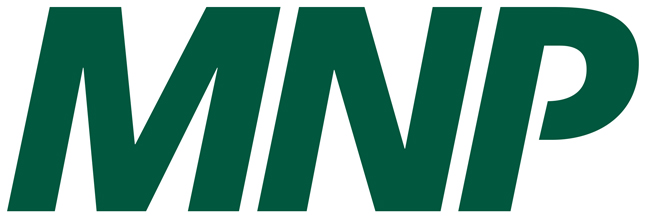
Three indirect tax tips for successfully navigating economic uncertainty
*Article sponsored by MNP

As your business navigates the ups and downs of today’s economy, one thing has become clear: maintaining and improving cashflow is crucial to sustaining your operations. And while the landscape might feel uncertain, there are tangible steps you can take to keep your finances healthy.
One area worth exploring is how you manage GST/HST. Let’s explore three key areas that could help you free up cash and improve your organization’s resilience.
1. Optimize your GST/HST filing frequency
When you first register for GST/HST, the Canada Revenue Agency (CRA) typically assigns you a filing period, especially if your sales are under $1.5 million.
But did you know you have the option to choose a more frequent reporting period? Monthly reporting, the most frequent option available, can be a game-changer for your cashflow.
Here’s how it works: Depending on your business operations, changing your filing frequency means you can receive refunds sooner or delay your tax payments, which, in turn, can provide some much-needed flexibility during challenging times.
If your business is in the export sector, for instance, your supplies are likely subject to GST/HST at a rate of zero percent. While you’re not collecting GST/HST, you might still be paying it on related expenses, which you can recover as input tax credits. If you’re filing your returns quarterly, you’re only receiving four refund cheques a year. Switching to monthly filing could mean getting your refunds faster, which could be a cashflow boost.
Act now: Review your current filing frequency. If you think you could benefit from receiving refunds more frequently, consider switching to monthly filing.
2. Leverage intercompany transactions with Section 156 election
If your business involves intercompany transactions — like management fees or rent — with closely related Canadian corporations or partnerships that are GST/HST-registered, there’s a strategic option available that can benefit your cashflow. The Section 156 election allows you to treat certain transactions with your closely related entity as being made for nil consideration. In other words, you wouldn’t need to charge GST/HST on these transactions.
Consider this example: ABC Ltd. leases its commercial building to XYZ Inc., its related subsidiary, for $50,000 per month, plus $2,500 in GST/HST. With the Section 156 election in effect, ABC Ltd. could forgo charging the $2,500 GST/HST, billing XYZ Inc. only the $50,000 in rent.
While XYZ Inc. could have claimed the $2,500 as an input tax credit, eliminating the tax altogether means they don’t have to wait for a refund from CRA.
This election can provide immediate cashflow benefits by reducing the amount of money tied up in taxes. However, it’s important to note that this election must be formally filed with CRA. If your business engages in intercompany transactions, it’s worth discussing with your tax advisor whether this option could work for your business.
Act now: Consult with your tax advisor about the Section 156 election to see if it can streamline your intercompany transactions and improve your cashflow.
You might also be interested in
- Six tips for managing your cash flow
- Preparing taxes 101: Claiming GST/HST
- Indirect tax: Using the Section 156 election to save on GST
3. Recover GST/HST on bad debts
Today’s businesses are facing increased financial hardships, which, unfortunately, can lead to unpaid invoices. When accounts receivable become bad debts, it can be frustrating — especially when you’ve already paid the GST/HST to CRA.
Here’s the good news: The tax code provides some relief. If you’re unable to collect on an account receivable, you may be eligible to claim a GST/HST adjustment, provided certain conditions are met. For instance, if you had an account receivable of $10,500 (including GST) that you’ve had to write off as bad debt, you could potentially recover the $500 GST you previously paid if you meet the following conditions:
- The supply was taxable and not zero-rated or exempt.
- The supply was made for consideration and to a recipient.
- The recipient was dealing at arm’s length with you.
- All or a part of the consideration and the tax payable became a bad debt.
- The bad debt was written off in your books.
- The tax was reported and remitted on your GST return(s).
However, if all or a portion of the bad debt is later recovered, you’ll be required to remit the GST/HST amount related to the recovery.
This adjustment is a valuable tool for recovering funds tied up in bad debts, helping to improve your business’ cashflow when it needs it the most. Be sure to consult with your accountant to ensure you’re taking full advantage of this opportunity.
Act now: Regularly review your accounts receivable and work with your accountant to claim GST/HST adjustments on bad debts that qualify.
Small adjustments, big impact
Weathering economic uncertainty isn’t only about resilience — it also could mean making some strategic tweaks to your financial operations. By optimizing your GST/HST filing frequency, leveraging the Section 156 election for intercompany transactions, and recovering GST/HST on bad debts, your business can uncover cashflow improvements that can make a difference.
Even when times are tough, these indirect tax planning solutions offer a practical way to help keep your business on solid ground.
Optimize your indirect tax planning with MNP
Our experienced team of tax advisors are here to help you create an indirect tax plan that works for you and your unique business. After all, small changes can lead to significant benefits, especially when every dollar counts.

